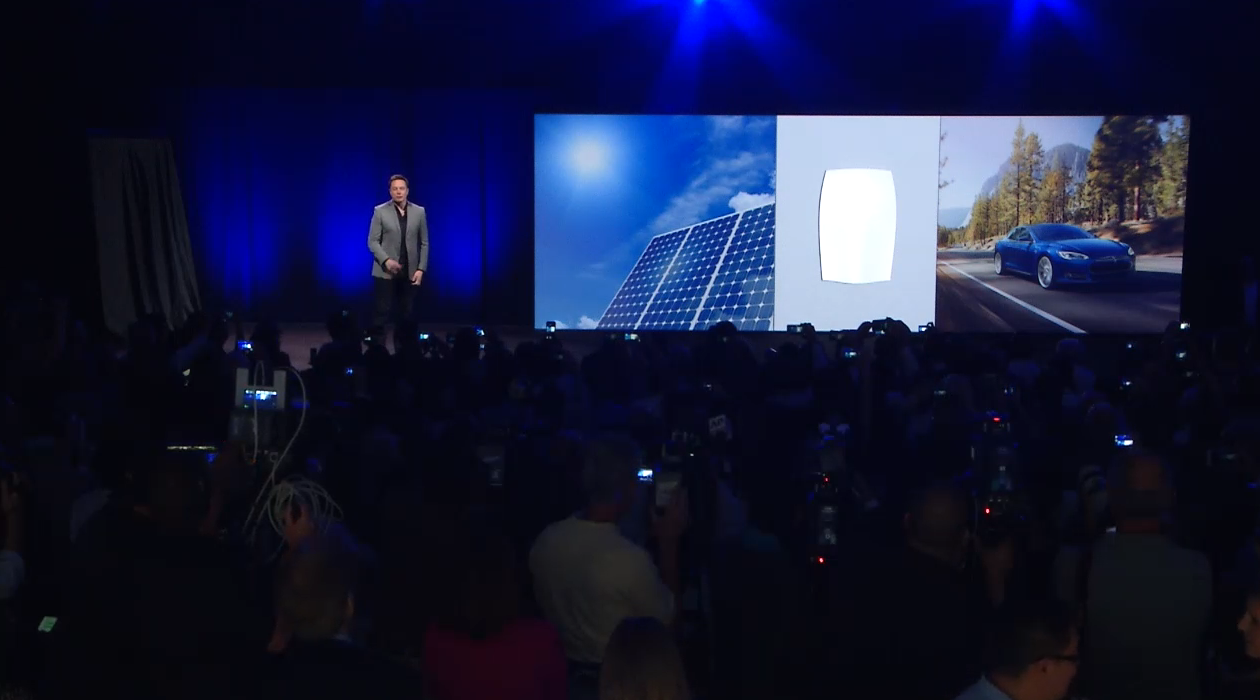Tesla Just Showed How to Transition the World off the Fossil Fuel-Burning Power Grid
Tech Features How ToLast night, CEO of Tesla and SpaceX Elon Musk took the stage in Hawthorne, Calif. and introduced the world to a new industry that Tesla is getting involved in: batteries.
In his typical laid-back style, Musk clearly described the real ecological problem we are facing both as a country and as a species. He started by showing the famous Keeling Curve and explaining how the concentration of carbon dioxide in the atmosphere is and has been exponentially rising in a seemingly uncontrollable way.
His solution to this problem wasn’t that we all buy Tesla cars though—instead, it was the sun. Musk made the point that the surface area needed to capture enough energy from the sun to completely get the United States off of the fossil fuel-burning grid wasn’t actually as big as people often assume.
So the solution is solar energy, but where does Tesla fit into the equation?
Batteries. First off was Musk’s announcement of a new product called the Powerwall. The Powerwall is a shiny 10 kWh battery that is meant to mount on the wall of your garage—or any wall of your house for that matter. Musk made a point of the fact that the Powerwall is made for the average American family home—no need for a battery room in your house or some extremely expensive equipment.

And why would you want a Powerwall? Well there were two scenarios that Musk presented. First was for people who live in volatile areas as a backup power source. Secondly—and perhaps more interestingly—someone could go completely off the grid with the Powerwall. In combined with solar panels, the Powerwall makes sustainable energy on an individual level a real possibility. At $3,500, it’s also impressively inexpensive, especially compared to other batteries. Now the solar panels that the Powerwall relies on that you’ll have to install on your roof will still cost some big bucks.
Musk used the example of how the Powerwall could actually help people who have no access to electricity at all as well. Not sure how a “remote village on an island”, as Musk put it, are going to have access to solar panels, but hey—who knows? Maybe Tesla will eventually innovate how to capture solar energy someday too. Until then, the Powerwall seems to be a really awesome solution to only half of the problem.
Tesla’s Dream for a Completely Sustainable World

Now if you didn’t think that was ambitious enough, Musk then turned our attention to the national—and even global scale. Musk introduced the Powerpack, which can be thought of as the higher-powered version of the Powerpack. While the Powerwall is made for an individual, the Powerpack is a GWh battery that is meant to scale, which means you could power an entire building, city, or country with a bunch of these massive batteries. In fact, Musk later pointed out that the entire facility and presentation was all powered by the building’s solar panels and a series of Powerpacks.
As an example, Musk pointed out that it would take 160 million Powerpacks to transition the United States off of burning fuels to sustainable energy. He went on to say that 900 million Powerpacks could transition the world and that 2 billion could transition all of the world including transportation and heating.
While that might sound a tad ridiculous, what it does do is ambitiously imagine an actual way to move forward. Tesla producing and selling 2 billion massive batteries isn’t realistic, but neither is the direction that world governments have headed with monetary incentives and carbon taxes to push for less energy consumption. Solar panels in combination with efficient, affordable batteries is a practical way forward that just might work someday.
Musk ended by re-emphasizing that Tesla isn’t meant to do this all on their own thanks to the company’s stance on open source technology. In the same way it did with its line of fully electric cars, Tesla’s interest seems to be more in leading the way—showing that it is actually possible to solve this massive, worldwide problem.
Who knows? Maybe in a few years we’ll actually see the price of sustainable energy and fossil fuel dependence actually decrease as more companies jump in the game and continue to innovate. Regardless of what you think of the practicality of Tesla’s ideas, it has once again done the thing it is best at: getting the conversation started on technology that was previously left to science fiction.